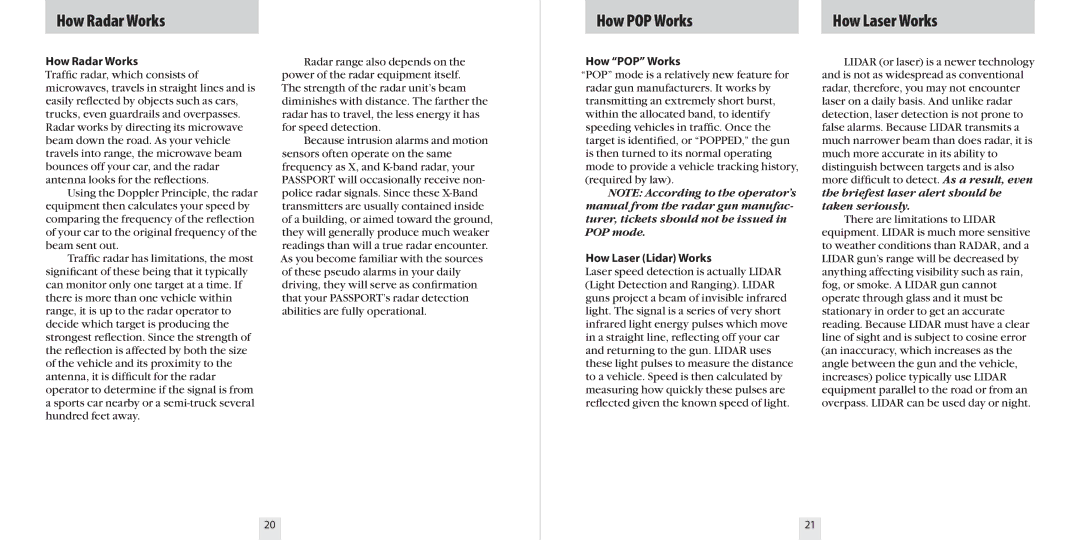
How Radar Works
How POP Works | How Laser Works |
How Radar Works
Traffic radar, which consists of microwaves, travels in straight lines and is easily reflected by objects such as cars, trucks, even guardrails and overpasses. Radar works by directing its microwave beam down the road. As your vehicle travels into range, the microwave beam bounces off your car, and the radar antenna looks for the reflections.
Using the Doppler Principle, the radar equipment then calculates your speed by comparing the frequency of the reflection of your car to the original frequency of the beam sent out.
Traffic radar has limitations, the most significant of these being that it typically can monitor only one target at a time. If there is more than one vehicle within range, it is up to the radar operator to decide which target is producing the strongest reflection. Since the strength of the reflection is affected by both the size of the vehicle and its proximity to the antenna, it is difficult for the radar operator to determine if the signal is from
asports car nearby or a
Radar range also depends on the power of the radar equipment itself. The strength of the radar unit’s beam diminishes with distance. The farther the radar has to travel, the less energy it has for speed detection.
Because intrusion alarms and motion sensors often operate on the same frequency as X, and
How “POP” Works
“POP” mode is a relatively new feature for radar gun manufacturers. It works by transmitting an extremely short burst, within the allocated band, to identify speeding vehicles in traffic. Once the target is identified, or “POPPED,” the gun is then turned to its normal operating mode to provide a vehicle tracking history, (required by law).
NOTE: According to the operator’s manual from the radar gun manufac- turer, tickets should not be issued in POP mode.
How Laser (Lidar) Works
Laser speed detection is actually LIDAR (Light Detection and Ranging). LIDAR guns project a beam of invisible infrared light. The signal is a series of very short infrared light energy pulses which move in a straight line, reflecting off your car and returning to the gun. LIDAR uses these light pulses to measure the distance to a vehicle. Speed is then calculated by measuring how quickly these pulses are reflected given the known speed of light.
LIDAR (or laser) is a newer technology and is not as widespread as conventional radar, therefore, you may not encounter laser on a daily basis. And unlike radar detection, laser detection is not prone to false alarms. Because LIDAR transmits a much narrower beam than does radar, it is much more accurate in its ability to distinguish between targets and is also more difficult to detect. As a result, even the briefest laser alert should be taken seriously.
There are limitations to LIDAR equipment. LIDAR is much more sensitive to weather conditions than RADAR, and a LIDAR gun’s range will be decreased by anything affecting visibility such as rain, fog, or smoke. A LIDAR gun cannot operate through glass and it must be stationary in order to get an accurate reading. Because LIDAR must have a clear line of sight and is subject to cosine error (an inaccuracy, which increases as the angle between the gun and the vehicle, increases) police typically use LIDAR equipment parallel to the road or from an overpass. LIDAR can be used day or night.
20 | 21 |
